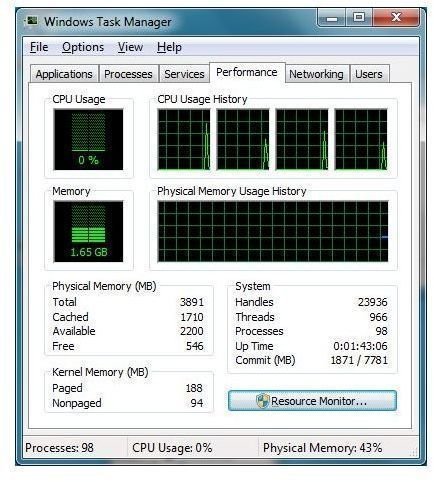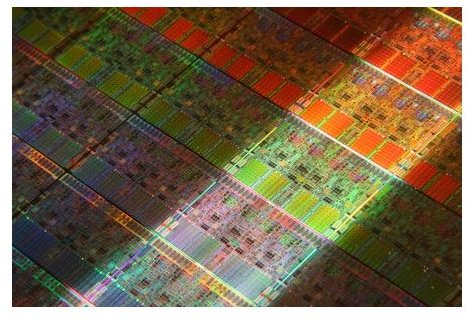How to Understand CPU Work
Understanding CPU Work
Your processor is essentially the heart of your computer. Everything your computer does will, at some point, depend on your processor. This includes unzipping files, playing games, working on spreadsheets and watching movies. These tasks may not always depend entirely on your processor, and in some cases there will be other components that have a bigger hand in determining overall performance, but your processor will at least be partially involved.
An issue that slows down your processor will therefor slow down everything that you do. If you’re having problems with a slow computer, investigating the work your CPU is doing will help you decide if the lack of performance is due to a hardware or software fault - or if you simply need to upgrade!
CPU Work - The Hardware Consequences
The work that processor does has many effects on your computer. The effects of CPU work are felt in the software that you run on your computer, but the hardware itself does the work. Everything that you ask of your CPU requires energy, and this energy produces heat, which must be expelled. This is why processors have limited clock speed. Obviously, clocking a processor at 10 GHz would produce a very quick processor, and indeed Intel at one time thought this would be possible. However, ramping up clock speed requires a lot of energy and also produces a lot of heat. It’s like asking a construction worker to build a house in a day. He might work as fast as he can, but he’ll quickly collapse from exhaustion.
It’s important to remember that CPU work is ultimately limited by hardware. I’ve often ran into computer users who firmly believe that modern software should work on any three-to-five year old computer. The reality, however, is that older processors are limited in the CPU work they can do. You may use the tactics described in this article to discover a program that is using way more CPU work than it should. But you might also find that your computer’s CPU simply isn’t capable of running some modern software.
The Basics of CPU Work - Windows Task Manager
The first step towards understanding CPU work is to press CTRL-ALT-Delete on your keyboard and then open your Windows Task Manager. This opens a display that monitors your computer’s processor utilization, which is detailed on the graph in the CPU Usage section of the Performance tab.
Depending on your processor you may see anywhere between 1 and 12 individual graphs under CPU Usage. Each graph represents an individual processor thread. AMD processors have one thread per processor core, but some Intel processors have a feature called Hyper-threading that offers two threads per processor core.
Sit back for a minute and watch the graph whle your computer is at idle. Also pay attention to the CPU usage bar that is to the left of the graphs. A normal idle computer is typically using less than ten percent of its processing power, although some less powerful machines, like netbooks or computers that are several years old, may be using up to twenty five percent. If Windows Task Manager reflects this level of usage, your computer is doing normal CPU work. Your computer might still seem slow, but it isn’t because the processor is under too much strain.
If your processor utilization graph is constantly over 50%, however, something is amiss. There may be a program in the background that is running without your knowledge, or your computer may be doing work that you’re not aware of. This isn’t always a sign of malware, however.
Identifying Software CPU Work Hogs

If you found that your processor is within normal limits, great! You don’t have to worry about something dragging down your processor. If you processor utilization was high, however, it is time to go hunting for the problem.
The best place to do this is also Windows Task Manager - handy, since we already have it open to look at the work our CPU is doing. Click on the Resource Monitor button on the bottom of the Performance tab. A new window will open, and this also will have several different tabs of information. Click on the CPU tab.
You’ll now be looking at a more detailed list of the work your CPU is doing. The Processes display will be open by default. Sort the Processes by Average CPU. Now you’ll be able to see which processes are working your CPU hard and which ones aren’t. You will typically see a lot of processes that are not using much CPU work. That is completely normal. What’s abnormal is to see a program using the majority of your CPU when you are not actively running the program.
Cleaning Up Software Work Hogs
Once you’ve identified the software that is consuming CPU work aggressively you need to decide what to do with it.
Sometimes the software will be something that you want. For example, you might have a background program that you downloaded to help clean up your computer, or you might have an anti-virus program installed. Unfortunately, as useful as these programs can be, they sometimes overwhelm less powerful CPUs. It is a good idea to experiment with various other programs that perform similar functions to see if any of them are able to achieve the same results while using less CPU work. You may ultimately need to go without the program in question, however - a hard decision, but sometimes a necessary one.
In other cases the software is something that you don’t want. If this is true, you’ll need to uninstall the software. This can be done by opening up your Control Panel and then opening the Programs, then click Uninstall Programs. This will open up a display that lets you find and uninstall programs on your computer. Doing this often dramatically increases your computer’s performance.
